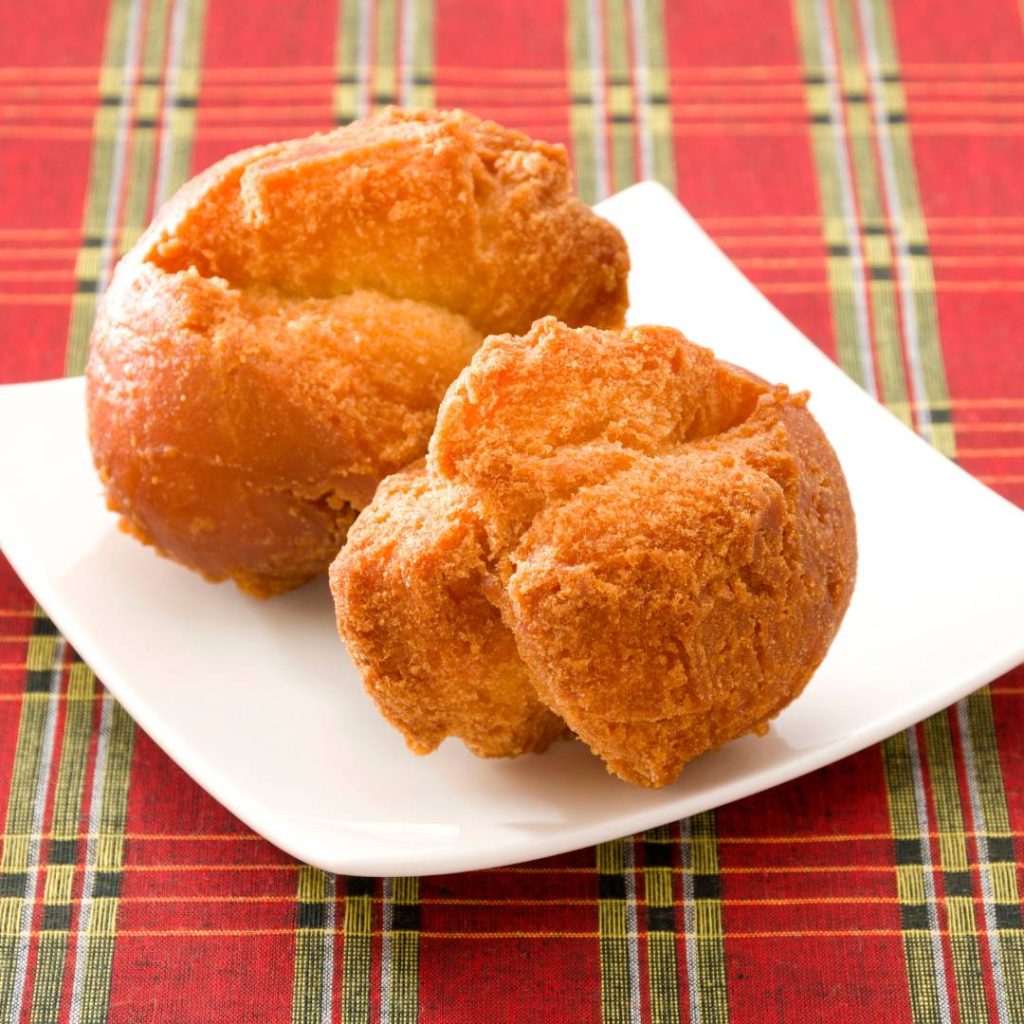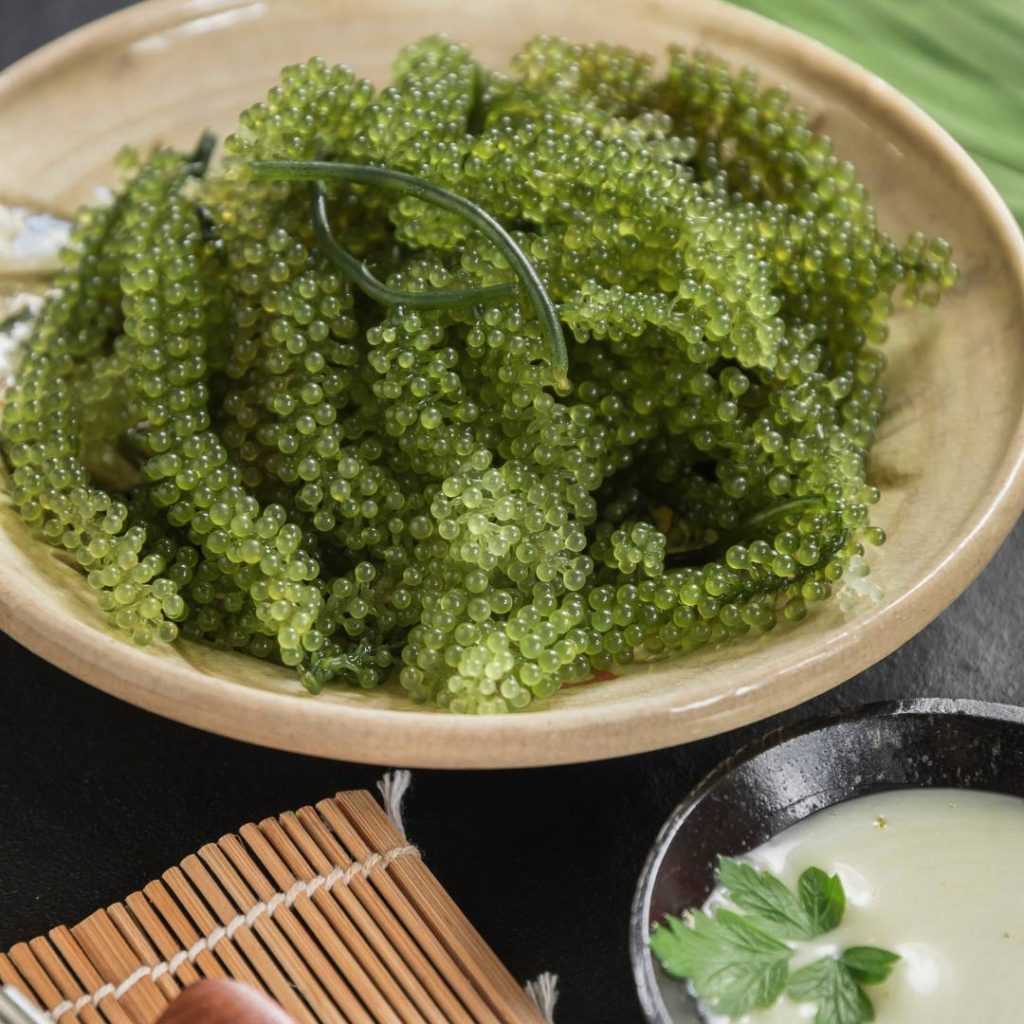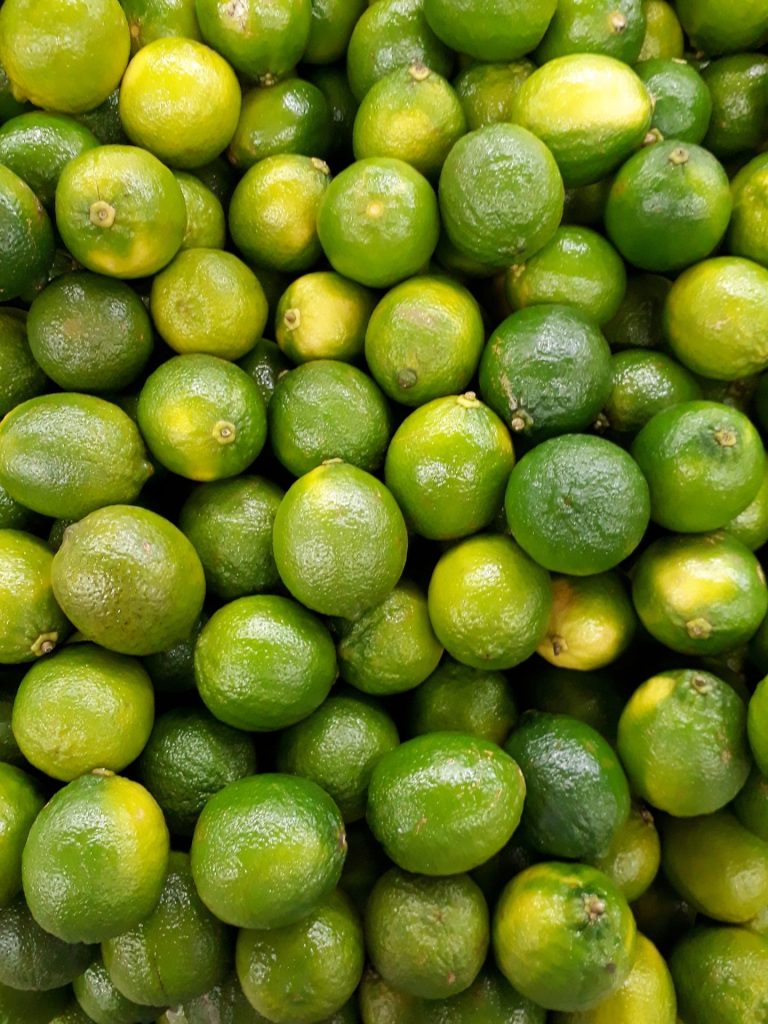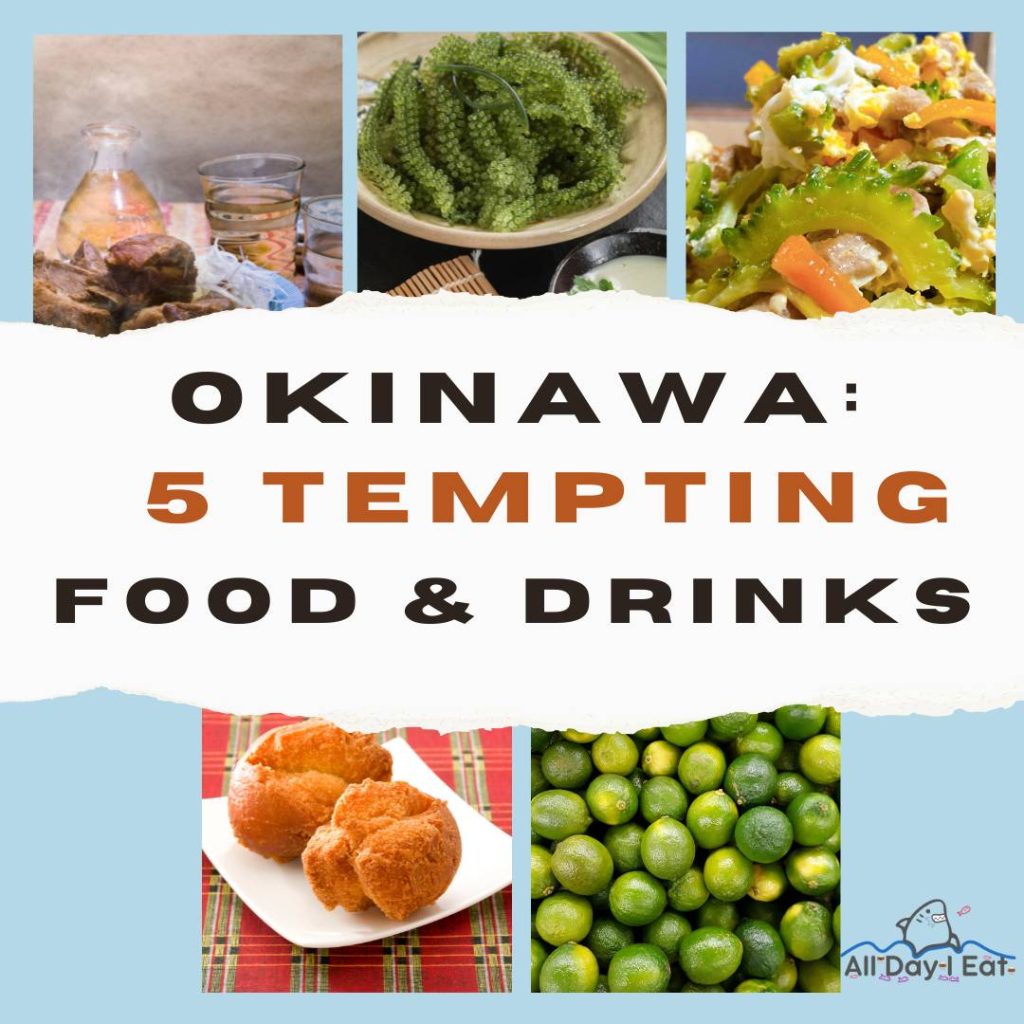Ah, Okinawan food.
I bet you’re scratching your head trying to define it!
Due to its location and long history of trade, the gastronomic influences from China, Korea, Southeast Asia, and the United States shaped a new cuisine that’s quite different—in the best way—from the rest of Japan’s culinary delights.
What I’m saying is: you should go judge it for yourself!
Here are just some of the sweet and savory treats that you should try when you fly to Okinawa. Let’s dive in!

Sata Andagi (Okinawa Donuts)
Who can resist a donut?
Try as you may, our brain can’t say no to this deep-fried, honey-dipped confection—especially when they’re fresh from the fryer. Oooh!
Dubbed as Okinawan donut holes, sata andagi is a common snack during festivals.
This heavy cruller is made with wheat flour, black sugar (molasses), milk, and egg yolk, resulting in a crisp crust and a soft interior.
Unlike old-fashioned donuts, they’re not sickly sweet. You’ll surely go for seconds.
With its relatively good shelf life, the Okinawan donut makes a wonderful inexpensive souvenir.
Ayumi no Sata Andagi, tucked on the second floor of Makishi market in Naha, sells their signature Maborishi sata andagi in mere minutes!
If you come out empty-handed, no need to shed a tear.
Ask for the dessert menu in restaurants, where they’re served with fresh fruits or a mound of sweet potato ice cream (another Okinawan treat you shouldn’t miss!).

Goya Champuru
The Japanese bitter gourd, goya is so prized that it’s in a lot of savory Okinawan dishes.
Raw goya packs a powerful, overwhelming punch.
But toss it with egg, tofu, spam, bonito flakes, and stir-fried radish and bean sprouts, and it turns into a delicious dish called goya champuru.
Here’s an open secret: champuru is traditionally used in households as a way to salvage leftover vegetables and meat.
No two are alike!
Whether you get it at the TripAdvisor-awarded Yunagi or have your Japanese friend whip it up as a welcome gift, you’ll reap its benefits: lowered blood sugar, shinier hair, and smoother skin.
In short, you’ll be ready for all the touring and photo ops ahead!

Umi Budou
Farmed off the coastline of the Miyako-jima island, umi budou or seaweed grapes are succulent seaweed clusters that look like, well, miniature grapes.
It is also nicknamed “green caviar” due to its tiny beads that burst a mild salty taste in the mouth.
You can eat it raw with rice and salmon roe or lightly dipped in soy sauce and vinegar.
And wash it down with a big gulp of beer if you fancy!
Rich in minerals like magnesium and calcium, it makes a great addition to salads or as an appetizer.
At Waryu Shuki Wadachi in Naha, you can order the Assortment of 3 Okinawan Delicacies consisting of sukugarasu (salted fish snack), scallions, and umi budou.
To save a few pennies, get it cheaper at the local supermarket or roadside shops.
They stay fresh at 15 – 28°C, so forget about refrigerating them and carry on with your afternoon tour.

Shiquasa (also Shikuasa or Shikuwasa)
Shiquasa is Ryuku island’s answer to lime and one of Japan’s sunny day staples.
Packed with vitamins, this superfruit helps combat natsubate (summer exhaustion) across the country.
With its sharp, refreshingly tart taste, it is used as flavoring for grilled fish, soups, and sweet cakes; squeezed over salad sashimi; blended into smoothies; and mixed into awamori cocktails.
Have I mentioned it also contains flavonoids or nobiletin that are effective in preventing carcinogenicity, diabetes, and liver diseases?
Shiquasa-infused treats overflow in the summer, much like sakura goods during cherry blossom season.
But you can buy them wholesale in August and beyond. Sample as many delicacies while you’re there!

Awamori
Sake is practically everywhere in Japan.
But did you know that Okinawa has its own take made of long-grain Indica rice?
Brought over from Thailand in the 15th century, Awamori is the country’s oldest spirit.
Rice is aged in traditional clay pots to make koji mold, lending the liquor its peculiar aroma and flavor.
Like shochu, it has a strong kick—with around 30 to 45% alcohol to be exact.
This cheap booze is consumed on the rocks, with a gentle splash of water.
Barflies can drink it straight or take it up a notch with the habu-shu, the more potent version that comes with a preserved pit viper in the bottle. Would you dare? You do you!
Conclusion
Whether you’re just trying one of these or all of the above, I guarantee you’ll have the best food memories in Okinawa.
What other places and restaurants are you planning to visit? Comment down below and maybe we’ll see you there!
For more trip-planning hacks and food guides, check out my Travel posts.











Konnichiwa! (Hello!) I'm Pat Tokuyama, a Japanese tofu cookbook author, who travels for music, food, and adventure. If you like Japanese tea, checkout some of the newestorganic japanese tea, matcha bowls and noren and more!
** Curious about the Plant Based Japanese Cooking Club? ** Learn more here!